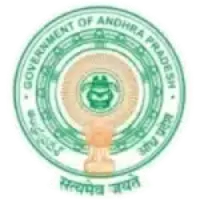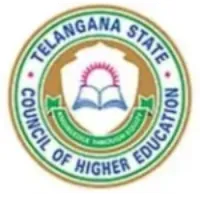Latest Applications Open 2024:
AP PGECET 2024 Electronics & Communication Engineering Syllabus has been Available now. The AP PGECET 2024 Electronics & Communication Engineering Syllabus is a crucial resource for aspirants preparing for this competitive examination. This syllabus provides a comprehensive outline of the topics and subjects candidates must cover while preparing for the Electronics and Communication Engineering paper.
The syllabus includes electronic circuits, signals and systems, digital electronics, microprocessors, communication systems, and electromagnetic fields and antennas. It also delves into advanced topics such as digital signal processing, VLSI design, microwave engineering, and optical communication.
A thorough understanding of this syllabus is essential for candidates to plan their preparation effectively. It allows them to focus on specific areas of study, practice relevant problems, and gain confidence in tackling the AP PGECET Electronics & Communication Engineering paper. Additionally, staying updated with any revisions or updates to the syllabus, as released by the exam authorities, is vital to ensure that candidates are well-prepared for the AP PGECET 2024 examination in this field.
AP PGECET 2024 Electronics & Communication Engineering Syllabus – Available
AP PGECET 2024 Electronics & Communication Engineering Syllabus has been Available now. Click to Download Syllabus PDF.
Engineering Mathematics
Engineering Mathematics is a fundamental component of engineering education, providing the mathematical foundation necessary for solving complex engineering problems. It encompasses various mathematical concepts and techniques that engineers use to analyze, model, and optimize systems and processes in their respective fields. A strong grasp of engineering mathematics is essential for students and professionals alike to excel in engineering disciplines.
Linear Algebra:
Matrix Algebra, Systems of linear equations, Eigen values and Eigen vectors.
Latest Applications For Various UG & PG Courses Open 2024
-
- Parul University | Admissions Open for All Courses 2024. Apply Now
- Chandigarh University | Admissions Open for All Courses 2024. Apply Now
- IIAD, Delhi | Admissions Open for All Courses 2024. Apply Now
- GIBS, Bangalore | PGDM Applications Open. Package upto 15.5 LPA. Apply Now
- GNIOT, Greater Noida | Admissions Open for All Courses 2023. Apply Now
- The Design Village | Admissions Open for All Courses 2024. Apply Now
- IMS Ghaziabad UC Campus | Admissions Open for All Courses 2024. Apply Now
- KIIT School of Management | Admissions Open for All Courses 2024. Apply Now
- KSRM | Admissions Open for All Courses 2024. Apply Now
- Jaipuria Institute of Management | Admissions Open for All Courses 2024. Apply Now
- NIIT | Admissions Open for All Courses 2024. Apply Now
- MITWPU | Admissions Open for All Courses 2024. Apply Now
- KL University | Admissions Open for All Courses 2024. Apply Now
- Alliance MBA | Admissions Open for All Courses 2024. Apply Now
- Alliance UG | Admissions Open for All Courses 2024. Apply Now
- GD Goenka | Admissions Open for All Courses 2024. Apply Now
Calculus:
Mean value theorems, Theorems of integral calculus, Evaluation of definite and improper integrals,
Partial Derivatives, Maxima and minima, multiple integrals, Fourier series. Vector identities, Directional
derivatives, Line, Surface and Volume integrals, Stokes, Gauss and Green’s theorems.
Differential equations:
First-order equations (linear and nonlinear), Higher-order linear differential equations with constant coefficients, Method of variation of parameters, Cauchy’s and Euler’s equations, Initial and boundary value problems, Partial Differential Equations and variable separable methods.
Complex variables:
Analytic functions, Cauchy’s integral theorem and integral formula, Taylor’s and Laurent’s series, Residue theorem, and solution integrals.
Probability and Statistics:
Probability and Sampling theorems, Conditional probability, Probability Density Function, Mean, median, mode and standard deviation, Random variables, Discrete and continuous distributions, Exponential, Poisson, Normal and Binomial distribution, Correlation and regression analysis.
Numerical Methods: Solutions of non-linear algebraic equations, single and multi-step methods for differential
equations.
Electronics and Communication Engineering
Electronics and Communication Engineering is a dynamic and highly sought-after field that designs, develops, and maintains electronic systems and communication networks. It is pivotal in advancing modern technologies, including smartphones, wireless communication, and internet connectivity. ECE professionals are at the forefront of innovation, driving global communication and technology evolution.
Networks:
Network graphs: matrices associated with graphs, incidence, fundamental cut set and fundamental circuit matrices. Solution methods: nodal and mesh analysis. Network theorems: superposition, Thevenin and Norton’s maximum power transfer, Wye-Delta transformation. Steady-state sinusoidal analysis using phasors.Linear constant coefficient differential equations; time domain analysis of simple RLC circuits; Solution of network equations using Laplace transform frequency domain analysis of RLC circuits. 2-port network parameters: driving point and transfer functions. State equations for networks.
Electronic Devices:
Energy bands in silicon, intrinsic and extrinsic silicon. Carrier transport in silicon: diffusion
current, drift current, mobility, and resistivity. Generation and recombination of carriers. p-n junction diode, Zener
diode, tunnel diode, BJT, JFET, MOS capacitor, MOSFET, LED, PIN and avalanche photo diode, Basics of
LASERs. Device technology: integrated circuits fabrication process, oxidation, diffusion, ion implantation,
photolithography, n-tub, p-tub and twin-tub CMOS process.
Analog Circuits:
Small Signal Equivalent circuits of diodes, BJTs, MOSFETs and analogue CMOS. Simple diode Circuits, clipping, clamping, rectifier. Biasing and bias stability of transistor and FET amplifiers. Amplifiers: single-
and multi-stage, differential and operational, feedback, and power. Frequency response of amplifiers. Simple op-
amp circuits. Filters. Sinusoidal oscillators; criterion for oscillation; single-transistor and op-amp configurations. Function generators and wave-shaping circuits, 555 Timers. Power supplies.
Digital circuits:
Boolean algebra, minimization of Boolean functions, logic gates; digital IC families (DTL, TTL,
ECL, MOS, CMOS). Combinatorial circuits: arithmetic circuits, code converters, multiplexers, decoders, PROMs
and PLAs. Sequential circuits: latches and flip-flops, counters and shift registers. Sample and hold circuits, ADCs,
DACs. Semiconductor memories. Microprocessor (8085): architecture, programming, memory and I/O interfacing.
Signals and Systems:
Definitions and properties of Laplace transform. Continuous-time and discrete-time Fourier
series, continuous-time and discrete-time Fourier Transform, DFT and FFT, z-transform. Sampling theorem. Linear
Time-Invariant (LTI) Systems: definitions and properties; causality, stability, impulse response, convolution, poles
and zeros, parallel and cascade structure, frequency response, group delay, phase delay. Signal transmission
through LTI systems.
Control Systems:
Basic control system components; block diagrammatic description; reduction of block diagrams.
Open loop and closed loop (feedback) systems and stability analysis of these systems. Signal flow graphs and their
use in determining transfer functions of systems; transient and steady-state analysis of LTI control systems and
frequency response. Tools and techniques for LTI control system analysis: root loci, Routh-Hurwitz criterion, Bode And Nyquist plots. Control system compensators: elements of lead and lag compensation, elements of Proportional-
Integral-derivative (PID) control. State variable representation and solution of state equation of LTI control Systems.
Latest Applications For Various UG & PG Courses Open 2024
-
- Parul University | Admissions Open for All Courses 2024. Apply Now
- Chandigarh University | Admissions Open for All Courses 2024. Apply Now
- IIAD, Delhi | Admissions Open for All Courses 2024. Apply Now
- GIBS, Bangalore | PGDM Applications Open. Package upto 15.5 LPA. Apply Now
- GNIOT, Greater Noida | Admissions Open for All Courses 2023. Apply Now
- The Design Village | Admissions Open for All Courses 2024. Apply Now
- IMS Ghaziabad UC Campus | Admissions Open for All Courses 2024. Apply Now
- KIIT School of Management | Admissions Open for All Courses 2024. Apply Now
- KSRM | Admissions Open for All Courses 2024. Apply Now
- Jaipuria Institute of Management | Admissions Open for All Courses 2024. Apply Now
- NIIT | Admissions Open for All Courses 2024. Apply Now
- MITWPU | Admissions Open for All Courses 2024. Apply Now
- KL University | Admissions Open for All Courses 2024. Apply Now
- Alliance MBA | Admissions Open for All Courses 2024. Apply Now
- Alliance UG | Admissions Open for All Courses 2024. Apply Now
- GD Goenka | Admissions Open for All Courses 2024. Apply Now
Communications:
Deterministic and Random signals, types of noise, Autocorrelation, power spectral density.
Analogue communication systems: amplitude and angle modulation and demodulation systems, spectral analysis of
these operations, superheterodyne receivers; elements of hardware, realizations of analogue communication systems;
signal-to-noise ratio (SNR) calculations for amplitude modulation (AM) and frequency modulation (FM) for low
noise conditions. Fundamentals of information theory and channel capacity theorem. Digital communication
systems: pulse code modulation (PCM), differential pulse code modulation (DPCM), digital modulation schemes:
Amplitude, phase and frequency shift keying schemes (ASK, PSK, FSK), matched filter receivers, bandwidth
consideration and probability of error calculations for these schemes. Basics of TDMA, FDMA and CDMA, and
GSM.
Electromagnetics:
Elements of vector calculus: divergence and curl; Gauss’ and Stokes’ theorems; Maxwell’s
equations: differential and integral forms. Wave equation, Poynting vector. Plane waves: propagation through
various media; reflection and refraction; phase and group velocity; skin depth. Transmission lines: characteristic
impedance, impedance transformation, Smith chart, impedance matching, S parameters, pulse excitation.
Waveguides: modes in rectangular waveguides, boundary conditions, cut-off frequencies, dispersion relations.
Basics of propagation in dielectric waveguide and optical fibres. Basics of Antennas: Dipole antennas; radiation
pattern; antenna gain.

As a dedicated Biology Science graduate, I’m passionate about sharing the latest updates in national and state entrance exams through my blog. I aim to keep aspiring students informed about exam trends, important dates, and changes in syllabi. With a keen interest in education, I strive to offer valuable insights for students navigating the competitive landscape of entrance examinations and admission tests. Stay updated with me.

